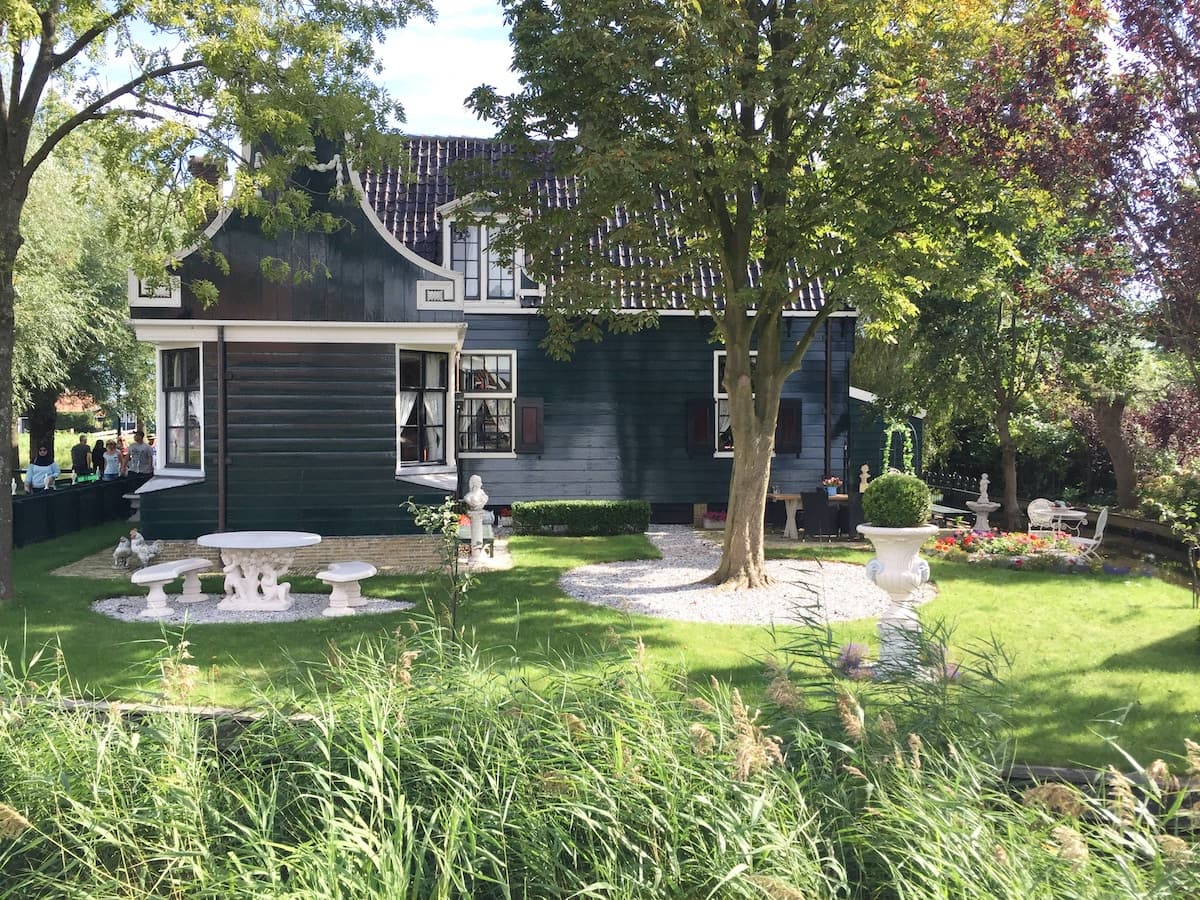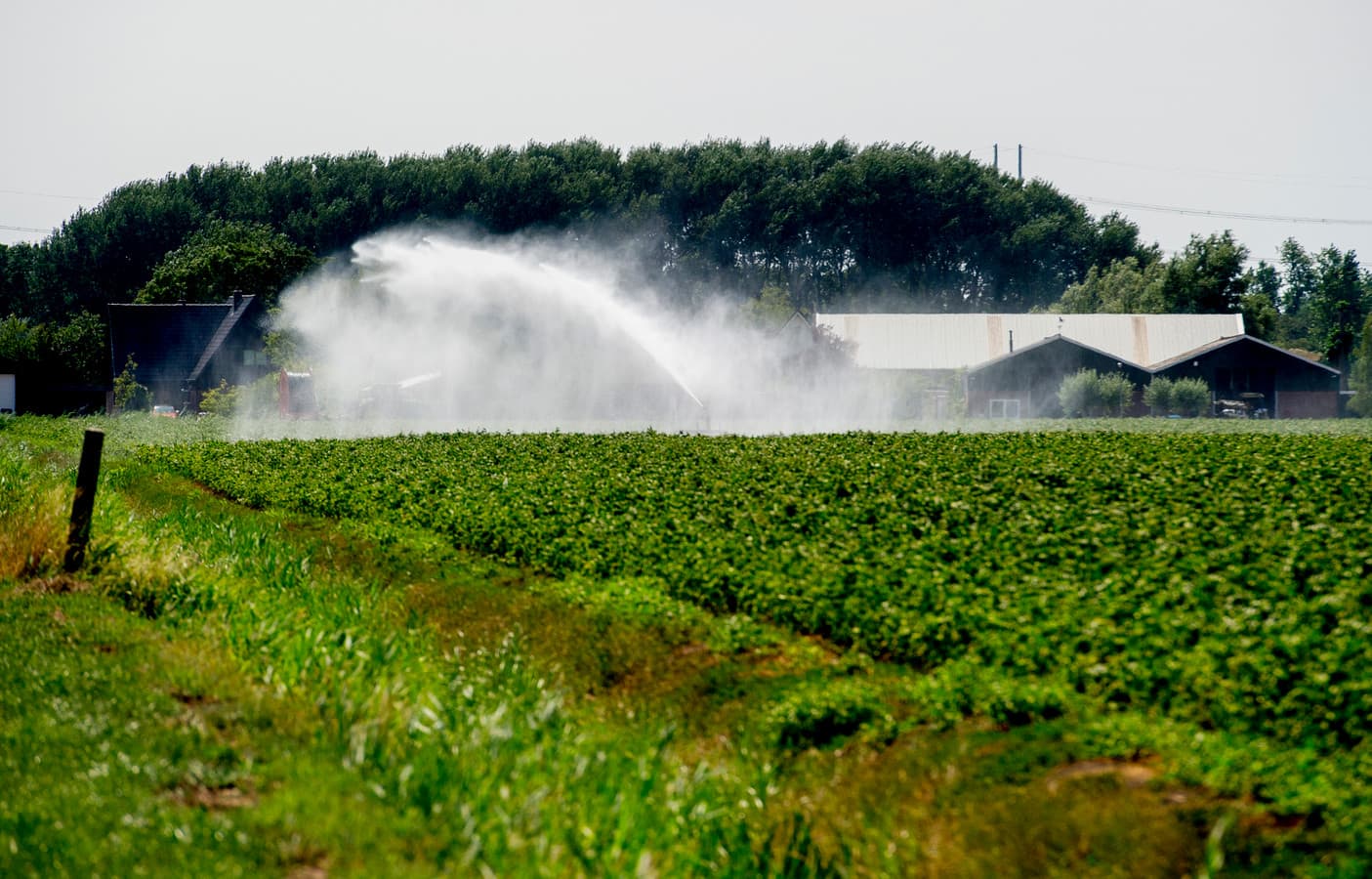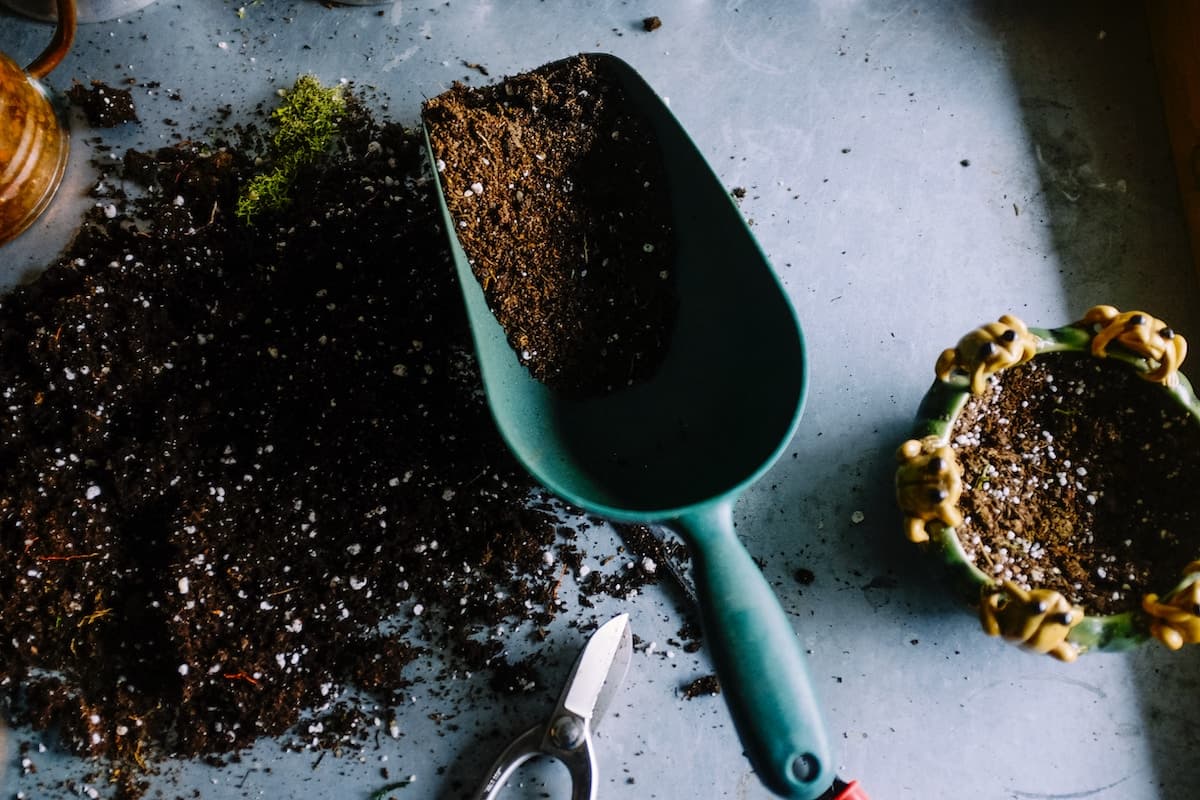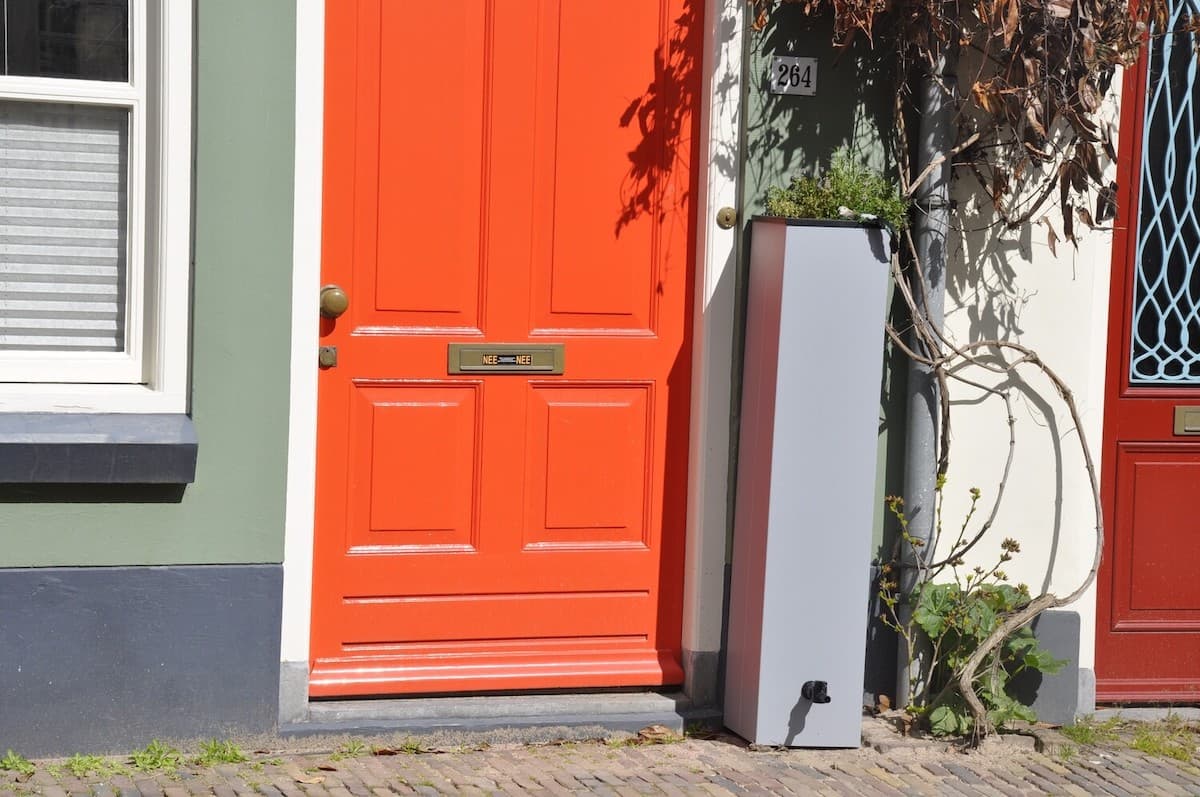The Environmental Impact of Traditional Backyards and How To Make Yours More Sustainable
As I sit in my backyard, nestled in north west of he Netherlands, I can't help but marvel at the potential that lies in this small patch of earth. It's a sunny afternoon, and the light filters through the leaves of our large grape plant, casting dappled shadows on the ground. This outdoor space, our own little oasis, has been a source of joy, relaxation, and at times, contemplation.
Our home, a charming 1930s house, carries with it a sense of history and character. But as we've come to realize, it also carries a responsibility - a responsibility to be more sustainable, not only in terms of energy conservation and isolation, but also outdoors. This realization has led us on a journey to transform our traditional backyard into a sustainable one.
But why, you might ask, is there a need for such a transformation? The answer lies in understanding the environmental impact of traditional backyards. From excessive water usage and reliance on chemical fertilizers and pesticides to the introduction of non-native plants, traditional backyards can often be more harmful to the environment than we realize.
In this article, we will delve into these issues, exploring the environmental impact of traditional backyards, particularly in the context of the Netherlands. We will discuss the importance of sustainable backyards and how they can help conserve water, reduce chemical usage, and support local biodiversity.
We will also provide a step-by-step guide to transforming your backyard into a sustainable one, sharing tips and tricks, and personal experiences along the way. Whether it's choosing native plants, implementing a rainwater collection system, or encouraging local wildlife, we will guide you through each step of the process.
Our journey towards a sustainable backyard has been filled with learning and discovery, and we invite you to join us on this journey. Together, we can make a difference, one backyard at a time.

The Environmental Impact of Traditional Backyards
When we think of a traditional backyard, images of lush green lawns, vibrant flower beds, and neatly trimmed hedges often come to mind, or maybe you know the neighbour with the fully paved garden. These backyards, while visually appealing, are often maintained through practices that can have a significant environmental impact.
Water Usage
One of the most significant impacts comes from water usage. Maintaining a green lawn and well-watered plants often requires a substantial amount of water. In fact, according to the Environmental Protection Agency, outdoor water use accounts for nearly 30% of total household water consumption in the United States, a large portion of which is used for watering lawns and gardens. In drier climates and during summer months, this percentage can be even higher.
In the Netherlands, where we experience dry summers, this high water usage is particularly concerning. Our water resources are precious, and using large amounts for our backyards can lead to wastage and unnecessary strain on these resources. Currently in summers we already see that in some areas farmers are not allowed to irrigate their land.

Chemical Fertilizers and Pesticides
Another significant impact of traditional backyards comes from the use of chemical fertilizers and pesticides. These chemicals are often used to promote plant growth and keep pests at bay. However, they can have harmful effects on the environment.
Chemical fertilizers, while effective in providing nutrients to plants, can seep into the groundwater or run off into local water bodies, leading to water pollution. This can result in a phenomenon known as eutrophication, where excess nutrients cause rapid growth of algae and other plants in water bodies, leading to reduced oxygen levels that can harm fish and other aquatic life.
Pesticides, on the other hand, can harm non-target organisms, including beneficial insects and birds. They can also contaminate soil, water, and other parts of the environment, leading to biodiversity loss and ecosystem disruption.
Non-native Plants and Their Impact on Local Biodiversity
The choice of plants in our backyards can also have an environmental impact. Many traditional backyards feature non-native plants, chosen for their aesthetic appeal or other desirable characteristics. However, these non-native plants can sometimes outcompete native species, leading to reduced biodiversity. They may also not provide suitable habitat or food sources for local wildlife, further impacting biodiversity.
In the Netherlands, where we have a rich variety of native flora and fauna, the introduction of non-native plants in our backyards can disrupt local ecosystems and contribute to biodiversity loss.
The Importance of Sustainable Backyards
As we've seen, traditional backyards, while often beautiful, can have a significant environmental impact. This is where the concept of a sustainable backyard comes into play. But what exactly is a sustainable backyard?
A sustainable backyard is one that is designed and maintained in a way that minimizes its environmental impact and contributes positively to local ecosystems. It involves practices such as conserving water, reducing the use of chemicals, and supporting local biodiversity.
Conservation of Water
One of the key aspects of a sustainable backyard is the conservation of water. This can be achieved through various methods, such as using drought-tolerant and native plants, implementing efficient watering practices, and setting up rainwater collection systems.
By conserving water, sustainable backyards not only reduce the strain on our water resources but also save homeowners money on their water bills. In the Netherlands, where dry summers are common, water conservation in our backyards can play a crucial role in managing our water resources effectively. Some people go further than that and conserve rainwater for flushing their toilets even, maybe that is a topic for in the future.
Reduction in Chemical Usage
Sustainable backyards also focus on reducing the use of chemical fertilizers and pesticides. This can be achieved by using organic compost made from kitchen and garden waste, practicing natural pest control methods, and maintaining healthy soil that can naturally provide the necessary nutrients for plants.
By reducing chemical usage, sustainable backyards help to minimize soil, water, and air pollution, protect non-target organisms, and promote a healthier and safer environment for us and our local wildlife.

Support for Local Biodiversity
Supporting local biodiversity is another important aspect of sustainable backyards. This involves choosing native plants that provide suitable habitats and food sources for local wildlife, creating features such as birdhouses and insect hotels, and maintaining a variety of plants to support a diverse range of species.
In the Netherlands, where we're seeing a worrying decline in bee populations, creating bee-friendly backyards can contribute significantly to conserving these vital pollinators.
Importance of Sustainable Backyards in the Context of the Netherlands
In the context of the Netherlands, sustainable backyards hold particular importance. With our unique climate, rich biodiversity, and the challenges of managing water resources and conserving local wildlife, creating sustainable backyards can contribute significantly to our environmental efforts.
Moreover, as homeowners, creating a sustainable backyard is one of the most direct and tangible ways we can contribute to environmental conservation. It's an opportunity to make a positive impact right in our own homes, and experience firsthand the benefits of living in harmony with nature.
How to Make Your Backyard Sustainable
Transforming a traditional backyard into a sustainable one may seem like a daunting task, but it's a journey that unfolds one step at a time. Here are some strategies and steps we've been exploring:
Choosing Native Plants
The first step towards creating a sustainable backyard is to choose native plants. Native plants are adapted to local conditions and often require less water and care than exotic species. They also support local wildlife by providing familiar sources of food and shelter.
When selecting native plants, consider their water and light requirements, growth patterns, and the type of wildlife they attract. In the Netherlands, some native plants you might consider include the Dutchman's Pipe, which is loved by bees, or the Guelder Rose, which provides food for birds in the winter.
Implementing a Rainwater Collection System
One of our ongoing projects is setting up a rainwater collection system, or "Regenton" as we call it in Dutch. This system collects rainwater from our roof, which we can then use to water our plants.
Implementing a rainwater collection system involves choosing a suitable barrel or tank, connecting it to your downspouts, and setting up a distribution system. Given the space constraints in our backyard, we're exploring creative solutions such as slimline tanks, like the “circular rain tank” that can fit into narrow spaces or using multiple smaller barrels placed strategically around the yard.

Creating a Composting System
Composting kitchen and garden waste is another effective way to make your backyard more sustainable. Compost provides rich nutrients for your plants, improves soil structure, and helps retain moisture, reducing the need for watering.
To start composting, you can create a simple compost pile in a corner of your backyard or use a compost bin. Add a mix of green waste (like vegetable peels and grass clippings) and brown waste (like dried leaves and paper), turn the compost regularly to aid decomposition, and in a few months, you'll have rich, dark compost ready to nourish your plants.
Encouraging Local Wildlife
A sustainable backyard is one that supports local wildlife. This involves not just choosing wildlife-friendly plants, but also creating habitats for various creatures. For instance, you can create a small pond to attract frogs and birds, install birdhouses, or build an insect hotel to provide shelter for beneficial insects.
In the Netherlands, we're particularly focused on supporting our local bee populations. We're choosing bee-friendly plants and avoiding the use of chemicals that could harm these vital pollinators.
Tips and Tricks for Maintaining a Sustainable Backyard
Maintaining a sustainable backyard involves regular care and attention. Here are some tips we've found helpful:
- Mulch your garden beds to retain moisture and suppress weeds.
- Practice companion planting to deter pests and promote plant health.
- Regularly check your plants for signs of pests or disease and deal with issues promptly and in an eco-friendly manner.
- Leave some areas of your garden a little wild to provide habitats for wildlife.
Personal Experiences and Lessons Learned
Our journey towards a sustainable backyard has been a learning experience. We've faced challenges, like finding space for our rainwater collection system, but we've also discovered the joy of seeing our garden thrive while knowing we're contributing to a healthier environment.
Creating a sustainable backyard is a journey, not a destination. It's about continually learning, experimenting, and making improvements. And the rewards - a vibrant, eco-friendly backyard teeming with life - are well worth the effort.
Conclusion
As we've explored in this article, creating a sustainable backyard is not just about making our own little corner of the world more beautiful. It's about contributing to a larger effort to conserve our planet's resources, support local ecosystems, and create healthier living spaces for ourselves and future generations.
In the Netherlands, where we face unique environmental challenges and opportunities, every step we take towards sustainability counts. Whether it's choosing native plants, setting up a rainwater collection system, composting our waste, or creating habitats for our local wildlife, each action makes a difference.
So, why not start your sustainable backyard journey today? It's a rewarding endeavor that brings benefits not just to you and your immediate environment, but also contributes to broader environmental conservation efforts. And remember, every little step counts. Share your experiences, spread the word, and let's create a greener, more sustainable world together.
References and Further Reading
For further reading and resources on creating a sustainable backyard, you might find the following links helpful:
- RHS Gardening: Edible Flowers - A comprehensive guide on edible flowers that can be grown in your garden, adding both aesthetic appeal and functional use.
- Plants for a Future - A resource for discovering plants with edible and medicinal properties.
- Campaign for School Gardening - An initiative to inspire children to enjoy plants and gardening.
Remember, creating a sustainable backyard is a journey of learning and discovery. Happy gardening!
Please note that the links provided are for informational purposes and were accurate at the time of writing. Always ensure that any plants you choose to grow are safe and suitable for your specific circumstances.